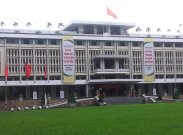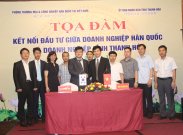Only three of the billion dollar projects that Vietnam licensed in 2008, the peak of the country in terms of foreign direct investment (FDI) attraction, have been implemented to some degree to date.
 |
According to data released by the Foreign Investment Agency under the Ministry of Planning and Investment, 2008 set the record by attracting an astonishing total registered FDI volume of $71.72 billion, dwarfing the $21.34 billion of 2007 and the $21.48 billion of 2009.
 source: vneconomy |
At the point, experts said that in the context of global economic difficulties, this proves international investors’ confidence in Vietnam. For multiple times, foreign investors said that Vietnam has a lot of problems but remains attractive despite its shortcomings.
However, the annual amount of FDI disbursed between 2006 and 2015, namely the actual amount that investors put into Vietnam, never exceeded $15 billion.
The seven biggest projects licensed in 2008 had registered capitals of at least $3.5 billion each, and together they accounted for over half of the total registered capital. They shouldered the hope of localities and the whole country to become drivers of economic growth and major contributors to the state budget. However, only three of them managed to make significant progress eight years after receiving their certificates.
The $4-billion Vung Ro Refinery, with a capacity of eight million tonnes of crude oil per year, has been lying idle despite the opening ceremony to start construction in 2014. Both the authorities of Phu Yen province and the leaders of Vung Ro Petroleum Ltd. said they were determined to start the project in 2016, but nothing is certain.
Malaysian company Berjaya Corporation Bhd.’s $3.5-billion Vietnam International University Township (VIUT) project in the northwest urban area of Ho Chi Minh City might see its investment certificate revoked, as eight years after receiving it, the project grounds still amount to little more than a field of grass.
The $9.8-billion Ca Na steel project of Vinashin-Lion, a joint venture between Malaysian company Lion Group and Vinashin, in Ninh Thuan had its license revoked in 2011. Later in the year, the prime minister green-lighted a proposal to turn the steel manufacturing complex into Ca Na Industrial Zone. However, no progress was made afterwards and the certificate was revoked in May this year. Most recently, major Vietnamese steel producer Hoa Sen Group announced that it would seek approval at its extraordinary shareholders’ meeting on September 6 to take over the 6-million-tonne-a-year steel complex project.
Brunei-based New City Properties Development’s $4.3-billion sea entertainment complex, New City project in Phu Yen, was licensed in 2008. Progress is slow, as the ground was only broken in June last year, after recruiting many new investors and reducing the scale.
Unlike the above projects, US fund Harbinger Capital Partners’ $4.2-billion Ho Tram project in Ba Ria-Vung Tau has been successfully implemented. The first phase of the fully-integrated five-star resort opened in July 2013. This is the first resort in Vietnam with a permission to operate a casino on its premises. In December 2015, Ho Tram Project Company Ltd. signed an agreement with Vietnamese company CotecCons to erect condo towers on a 164-hectare area.
Also successful to an extent is the $6.2-billion Nghi Son Refinery in Thanh Hoa, invested by four companies, namely PetroVietnam, Kuwait Petroleum International, and Japanese companies Idemitsu Kosan and Mitsui Chemicals. The refinery is in the last stage of preparation before starting operation in 2017 as the joint venture planned.
Fastest to be implemented and to grow, and also the most notorious, is the $7.9 billion Hung Nghiep Formosa steel production plant in Ha Tinh. The project saw a raise to its capital to $9.9 billion in 2012. As of October 2015, according to the Ha Tinh Department of Planning and Investment, the investor was planning to increase the capital to $28.5 billion. In mid-2016 Formosa was found to be responsible for multiple cases environmental violations. The company pledged to pay $500 million in compensation for the damages, but as of now the money has not reached the affected parties, which include fishing households whose livelihood was compromised by a mass wave of fish death along the coast of Central Vietnam, and raising suspicion of fish quality.
The Ministry of Planning and Investment (MPI)’s Foreign Investment Agency (FIA) often releases two figures to quantify FDI attraction, the committed and disbursed FDI amounts. Since it started recording the country’s performance, Vietnam has lured in more than $293 billion in total committed FDI, but only about half of this sum has actually been disbursed.
Source: VIR














